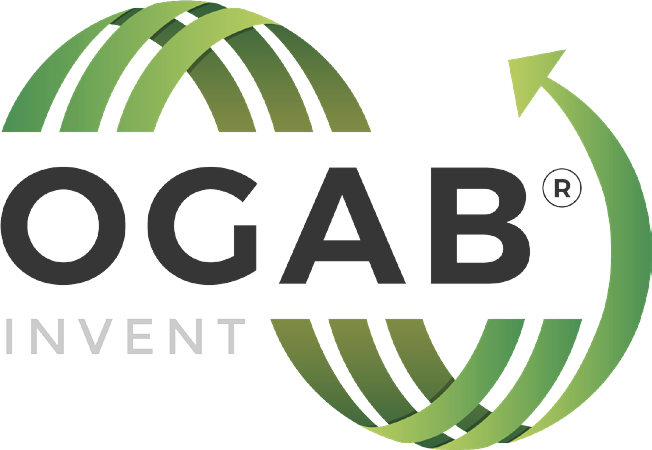OGAB® ROAD Sustainable Braking
The patented Ogab® Sustainable Braking system offers increased safety levels, optimised brake performance, and significantly reduces the damaging environmental impact caused during the product life cycle of disc brakes and pads on road vehicles.

Better Safety For All
Consider that to produce one 8.77Kg brake disc creates up to 19.9Kg of CO2 emissions
We aim to reduce the unnecessary replacement of brake discs by extending their lifespan and preventing the needless energy consumption to reproduce them.
Offering a fully sustainable system and powered by energy that would otherwise be lost, our Active Flow Technology can also be utilised to collect harmful particulate matter from brake wear at the point of friction to reduce its harmful impact on both the environment and public health.
The primary aim of our technology is to improve vehicle safety by preventing temperature escalation from reaching dangerous levels. In turn, this also slows down break wear as they operate at cooler temperatures. Maximising the life cycle of brakes will mitigate the ongoing damages to the environment with how much energy we consume in making and recycling brake components. Especially when you consider that to produce one 8.77Kg brake disc, up to 19.9KgCO2 eq is emitted. If you’d like to read more about this, please view our environmental report pages.
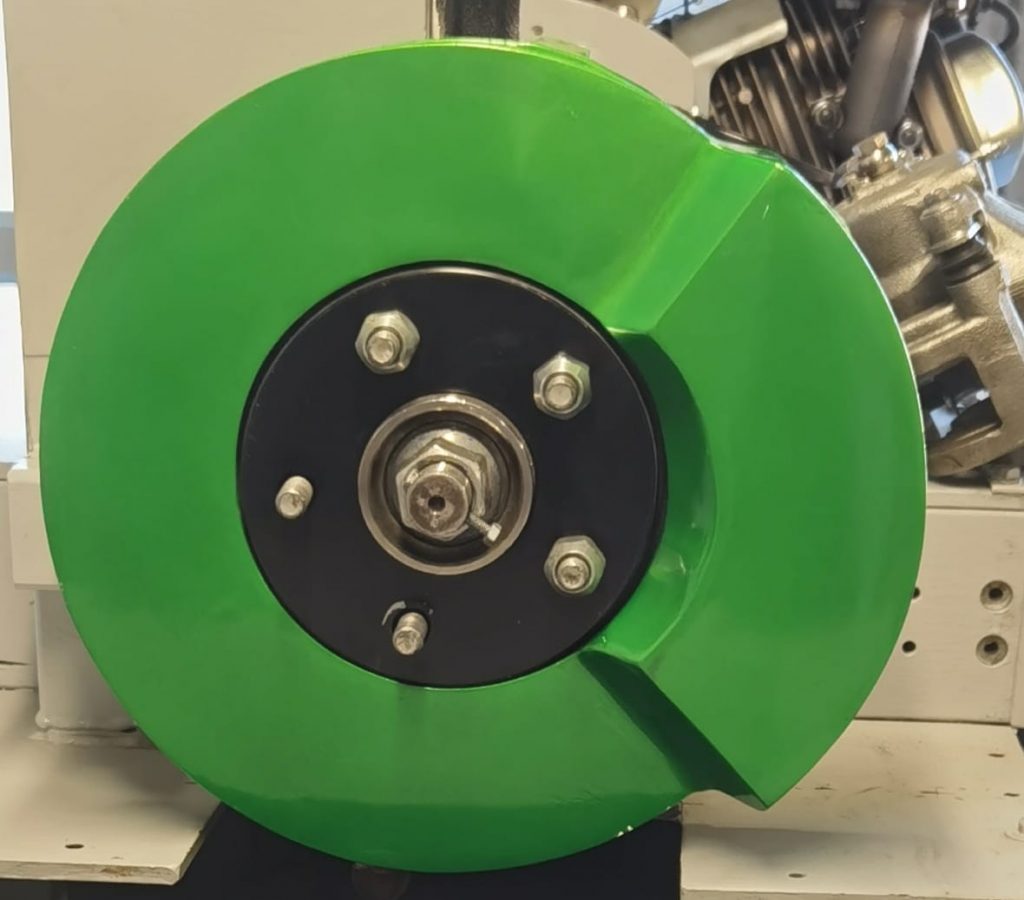
The action of braking generates massive amounts of heat, and brake components have a relatively narrow temperature window within which they can safely operate. Furthermore, brake performance degrades drastically when they exceed their maximum temperature rating. Brake rotors (ie brake discs) are usually designed to dissipate heat.
Aerodynamic cooling of brake discs through convections is the primary mechanism by which the brake discs are cooled; however, in vehicles that have a wheel well (such as cars) and in vehicles where the brake rotors are disposed within the barrel of the wheel, air around the brake discs is turbulent and relatively slow moving (for instance, when compared to the speed of the vehicle). This causes a heat build-up around the brake components and diminishes their ability to shed that heat. By applying air from a high-pressure source, this will allow the brakes to shed heat at a faster rate and dramatically lowers the average operating temperature.
Ogab® Sustainable Braking utilises patented Active Flow Control Technology that is powered only by energy that would be otherwise be lost.
In-House Testing
At our HQ we have completed a number of tests using our advanced brake simulation rig. The rig includes an enclosed brake assembly that incorporates both the active cooling and particle capture features of our Sustainable Braking technology. As anticipated, the tests yield a huge positive for safety and the environment with an evident reduction in heat escalation within the disc and pads as well as the prevention of particulate matter from brake wear entering the atmosphere.
Out test rig includes a full brake assembly that we have enclosed for active cooling and particle capture testing.
Enclosing the assembly in tandem with our particle suction system allows up to 100% of particulate matter caused by brake wear to be captured and more importantly, prevented from entering the atmosphere. Within the enclosure the operating temperature of the brakes are controlled by active cooling to prevent heat escalation and offer an optimised temperature window for the friction pair to operate in.
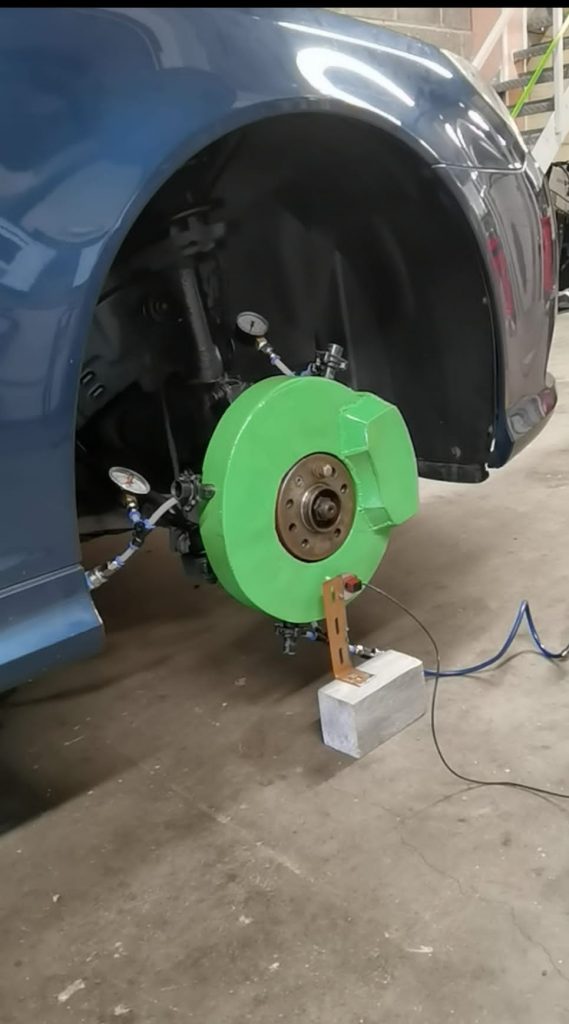
The brake assembly enclosure allows up to 100% capture of particulate matter from brake wear.
We also tested the assembly enclosure and particle suction system with additional “artificial” particulate matter to gauge the performance of the system with higher volumes of PM emissions present. As you can see from the image below, the particulate dust represented by the white powder was clearly contained by the enclosure.
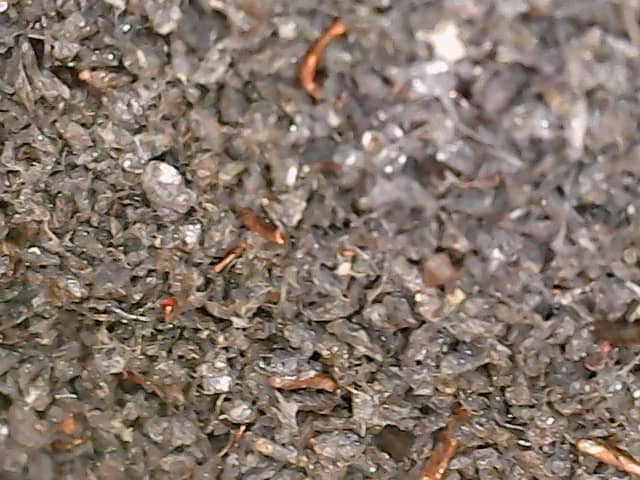
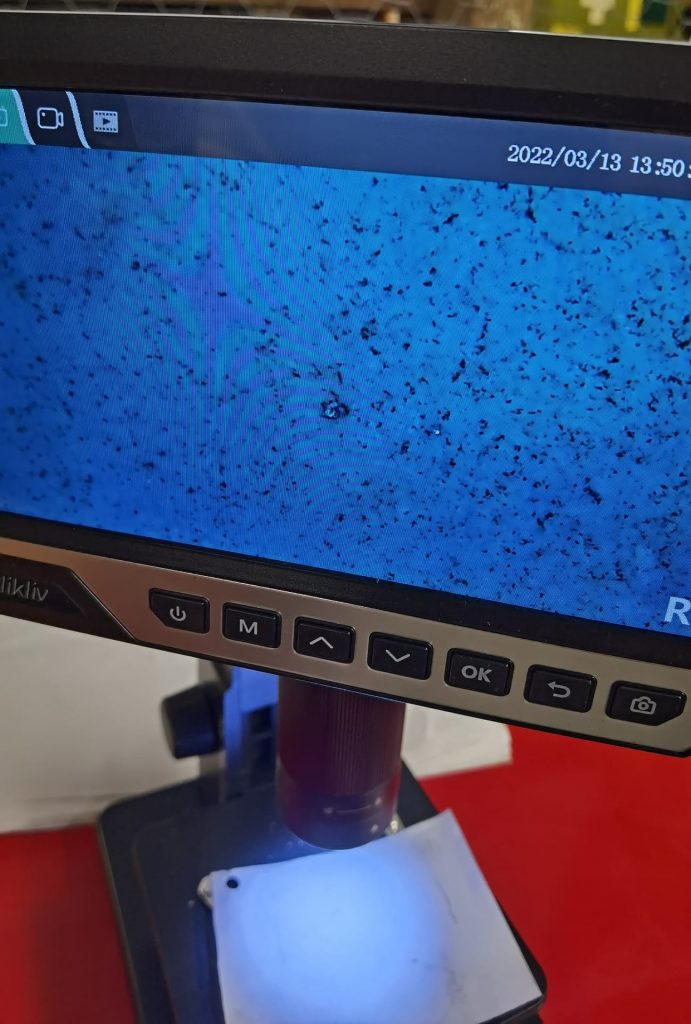
Any particulate dust that was entered in to the brake assembly enclosure was captured completely.
The capture of Particulate Matter within the enclosure includes PM10, PM2.5, making the system a comprehensive method of capturing PM emissions from brake wear.
CFD Analysis
Testing the system in a CFD simulation in order to understand if there are any negative effects such as drag were an important part of our research program. We also tested the key benefits of active cooling to prevent heat escalation and reduce peak temperature in the disc.
Simulation Results
We have completed simulation tests on an Audi A4 car travelling at 70 miles per hour, which stops in 3.24 seconds. The transient simulation for the test was set for 10 seconds in which for the first 3.24 seconds the car reduces its speed linearly from 70 miles per hour to zero and then remains stationary up to t=10s. The tests were carried out on the two key test cases, with and without brake cooling.
For the brake cooling case, the nozzles remains operative for all 10 seconds of simulation. For this analysis, mass flow rate of 0.1 kg/s was assigned to each of the nozzles (however, other mass flows can be considered either higher or lower, for example, to fit capacity of a turbocharger).
The results of overall car drag force during the 10 seconds are shown below for the case without brake cooling and the case with brake cooling. As evident, the cooling has not significantly affected the drag force.

The results of front wheel drag force during the 10 seconds is illustrated as below. As evident, the cooling has not significantly affected the drag force.

At the same time, the brake cooling technology proves to be effective in reducing the brake disc average volume temperature as depicted below:

Also, the turbulent intensity for various time moments and for both cases is presented in the figure below:

As evident, there is no significant difference in turbulence intensity between the case without brake cooling and the case with brake cooling.
By optimising the operational brake disc temperature and preventing excessive heat accumulation, it maintains maximum efficiency for the highest standard in performance and safety. This means shorter stopping distances and an extended lifespan on all brake discs for road vehicles.
This preventative method of keeping the disc at optimum temperature prolongs the life of the disc brake through eliminating product degradation due to friction and extreme heat.
This prolonged lifespan results in significantly reducing the damaging environmental impact caused by excessive manufacturing demand of inefficient discs and pads, as well as the endless struggle that follows when the discs need to be recycled.
The toxic emissions that are released due to the burn-up of the pads at high braking temperatures is also reduced. This reduction in particle emissions is beneficial for both the health of the environment and all members of society itself.
In addition to this, the current braking technology relies heavily on aerodynamics to cool the brakes after friction occurs and for the heat to then dissipate during motion. As Ogab® technology does not rely on aerodynamics to cool the brakes, it has a complete, separate system (that injects air) allowing the brake assembly to be either covered or housed, making it possible to capture the deadly particles from brake wear before they enter the atmosphere. There are many ways of achieving this, including using a selective catalytic reduction unit. Alternatively, it would be possible to collect the harmful particles in a separate unit that could be then disposed of safely at a designated recycling centre or the local automotive dealer’s workshop facilities.
Offering innovation for a brighter future, Ogab® Sustainable Braking gives the solution to a problem that affects us all in our day-to-day lives.
Prototyping & Testing
Aerodynamic Wheels
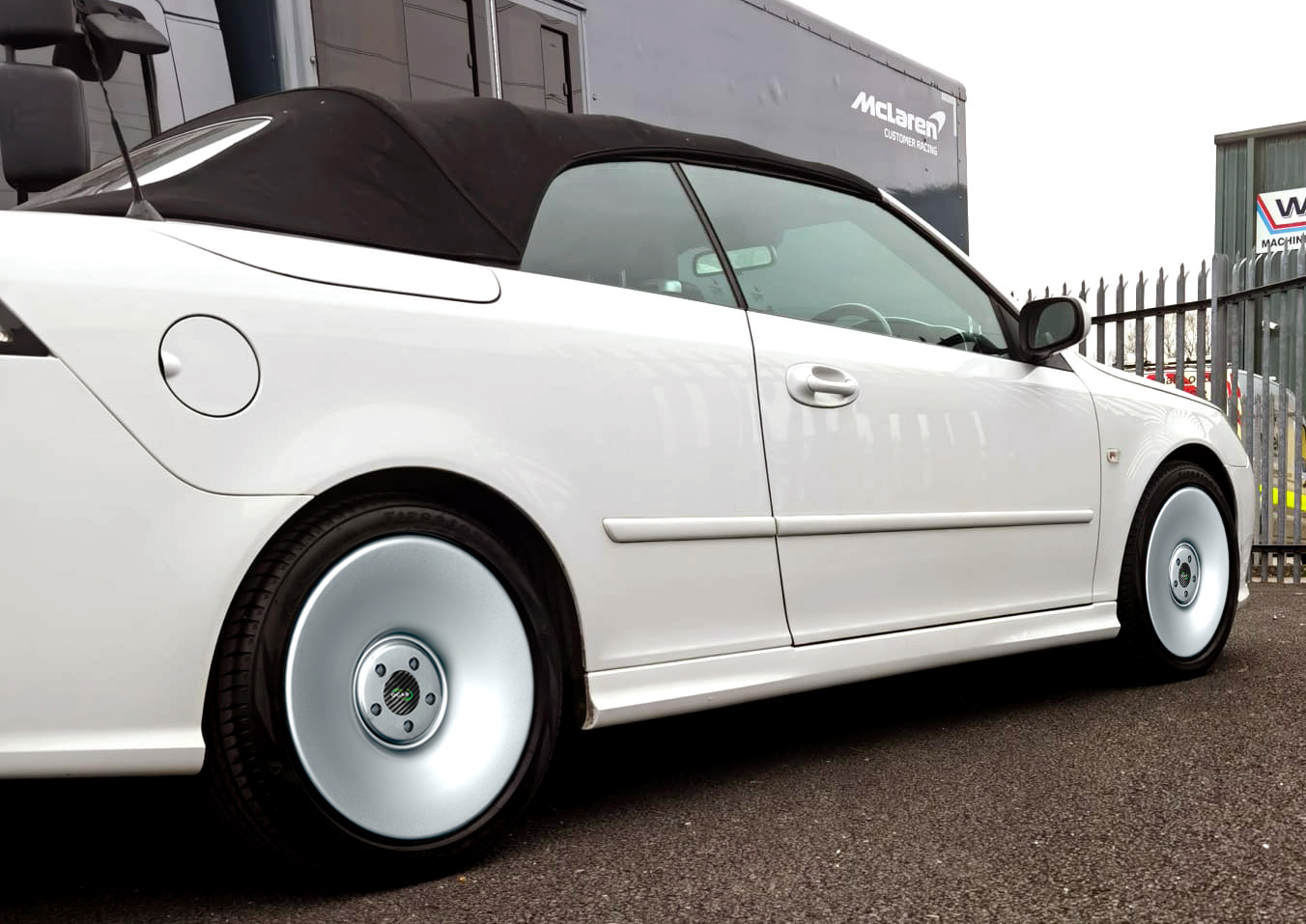
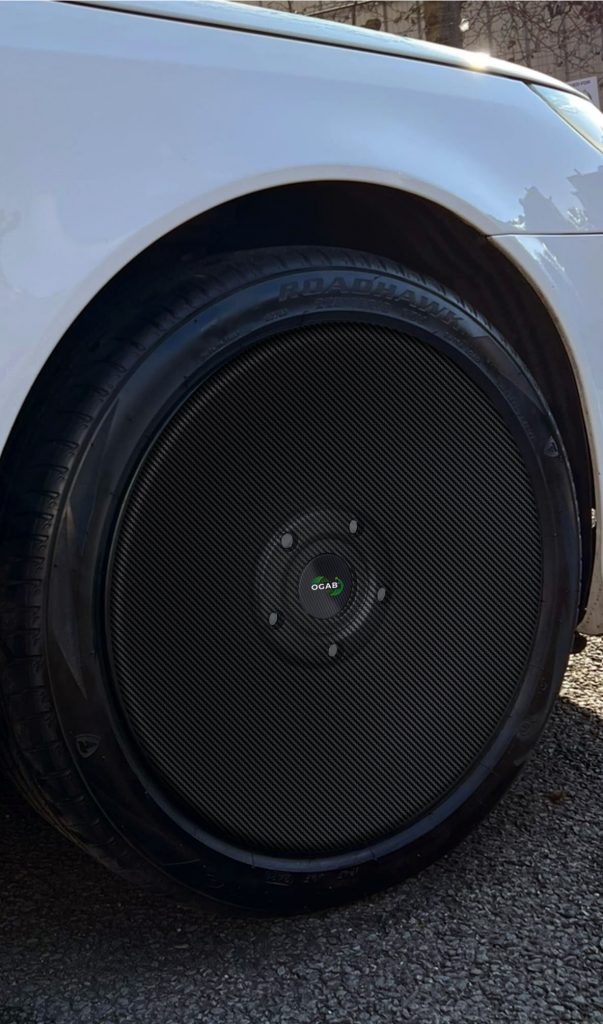
Get the full facts and insight on the brake disc product life cycle
Ogab® can help make a change for the better. Contact us today to enquire about our Sustainable Braking technology and how it can help you.
